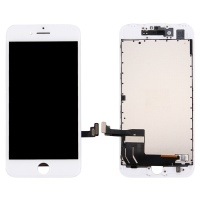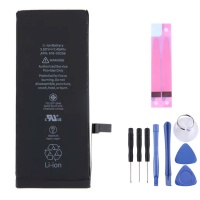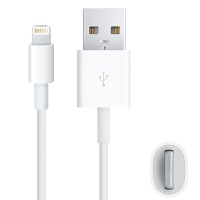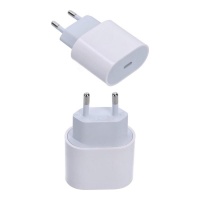iPhone 7 parts





- The Definitive Guide to iPhone 7 Spare Parts: Screens, Batteries and More
- A Technical Look at the iPhone 7: Key Features
- All About iPhone 7 Screens: Types and How to Choose the Right One 📱
- Comparison of Screen Technologies: INCELL vs. OLED vs. Original
- The iPhone 7 Battery: Key to Autonomy 🔋
- Which Battery Does the iPhone 7 Use and How to Know if it's Failing?
- OEM Batteries without a Logo: Original Quality, Unbranded
- Basic Guide to Changing the Battery
- Other Essential Spare Parts for Your iPhone 7
- 1. Charging Port (Lightning Connector)
- 2. Cameras (Rear and Front)
- 3. Earpiece Speaker and Loudspeaker
- 4. Home Button / Touch ID Sensor
- The Chronic Fault of the iPhone 7: "Audio IC Disease" (Loop Disease) 🎤
- Back Housings: Colours and Replacement Process
- Software Problems That Seem Like Hardware Faults: A Technician's Perspective
The Definitive Guide to iPhone 7 Spare Parts: Screens, Batteries and More
The iPhone 7, despite the years since its launch in September 2016, remains an iconic and functional device for many users. Its balance of a classic design, competent performance for daily tasks, and a robust application ecosystem keeps it relevant. However, like any electronic device, the passage of time and daily use can cause its components to fail. At iLevante.com, we understand the importance of keeping your iPhone 7 in perfect condition. That's why we've created this complete and detailed guide, where we will thoroughly explore each of the available spare parts, from screens to the most specific internal components.
This article will not only help you identify the part you need, but will also offer a technical perspective on the most common problems, help you diagnose faults, and provide basic guidance on how to approach the most common repairs. Our goal is that, whether you are an average user looking for a solution for a broken screen, or a hobbyist technician eager to learn more, you will find all the reference information here to bring your iPhone 7 back to life.
A Technical Look at the iPhone 7: Key Features
To understand the repairs, we must first get to know the device. The iPhone 7 was a significant evolutionary leap for the Apple family. It was the first model to eliminate the 3.5mm headphone jack, committing to audio via the Lightning port and wireless connectivity. It also introduced a solid-state home button, which is not a mechanical button but a pressure-sensitive surface with haptic feedback thanks to the Taptic Engine.
- Processor: A10 Fusion chip with 64-bit architecture and embedded M10 motion coprocessor.
- Screen: 4.7-inch Retina HD display with IPS technology and a resolution of 1334 by 750 pixels.
- Main Camera: 12MP with an ƒ/1.8 aperture and optical image stabilisation.
- Front Camera (FaceTime HD): 7MP with an ƒ/2.2 aperture.
- Battery: Lithium-ion, model A1778, with a capacity of 1960 mAh.
- Resistance: IP67 rated for splash, water, and dust resistance.
- Original Colours: Silver, Gold, Rose Gold, Matte Black, Jet Black, and a special (PRODUCT)RED edition.
All About iPhone 7 Screens: Types and How to Choose the Right One 📱
A broken screen is, by far, the most frequent problem. An impact, a drop, or excessive pressure can render the LCD panel, the touch glass, or both, useless. Fortunately, there is a wide range of replacement screens on the market. Understanding their differences is crucial to making an informed decision.
Comparison of Screen Technologies: INCELL vs. OLED vs. Original
At iLevante.com, we offer different qualities to suit your needs and budget. Here they are in detail:
- TFT Screens: These are the most economical option. They use older technology which can result in less vivid colours and higher battery consumption compared to the originals. They are a functional, low-cost solution to get you by.
- INCELL Screens: This technology integrates the touch panel and the LCD into a single layer, making them thinner than TFTs and very similar in structure to the original screen. They offer excellent value for money, with good colour reproduction and touch response. They are the most popular choice for most repairs.
- OLED Screens (Hard and Soft): Although the original iPhone 7 does not use OLED, replacements with this technology are available. OLED screens offer pure blacks and more vibrant colours.
- Hard OLED: These use a rigid glass substrate. They offer superior image quality to INCELL but are more fragile against twists or drops.
- Soft OLED: These use a flexible plastic substrate, similar to the screens of more modern iPhones. They are more durable and shock-resistant than Hard OLEDs, and their image quality is the closest to perfection, although their price is higher.
- Original Screens (OEM): These are the highest quality screens, often reclaimed from other devices or manufactured to the same standards as the originals. They offer the same image quality, brightness, and touch response as the screen that came with your iPhone from the factory. It is the recommended option for those looking for a perfect repair without compromising on any aspect.
The iPhone 7 Battery: Key to Autonomy 🔋
A degraded battery is the second most common problem. If you notice that your iPhone 7 shuts down suddenly, lasts for only a few hours, or its performance has drastically decreased, it is very likely that you need a battery replacement.
Which Battery Does the iPhone 7 Use and How to Know if it's Failing?
The iPhone 7 is equipped with a lithium-ion battery with a capacity of 1960 mAh. Apple considers a battery to be in good condition if it retains at least 80% of its original capacity after 500 complete charge cycles.
To check your battery's health, go to Settings > Battery > Battery Health. If the "Maximum Capacity" percentage is below 80% or if you see a message indicating that the battery requires service, it's time to replace it. Other symptoms of a faulty battery include:
- The phone shutting down with charge percentages above 10%.
- Slow performance or "lag" when opening apps (the system throttles performance to prevent unexpected shutdowns).
- The device gets excessively hot during charging.
- The back of the phone appears slightly swollen (be careful, a swollen battery is dangerous!).
OEM Batteries without a Logo: Original Quality, Unbranded
It's a fact that Apple does not sell original spare parts directly to the public. So, what are OEM batteries? OEM stands for "Original Equipment Manufacturer". These are batteries made by the same companies that produce the batteries for Apple, following the same quality standards and using the same materials. The only difference is that, due to licensing issues, they cannot carry the Apple logo. By installing an OEM battery from iLevante.com, you are acquiring a product with the same quality, safety, and durability as the original.
Basic Guide to Changing the Battery
- Discharge the battery: For safety, ensure the battery is below 25% charge before you begin.
- Open the phone: Remove the two pentalobe screws located on either side of the charging port.
- Apply heat and lift the screen: Gently heat the bottom edges of the screen to soften the adhesive. Use a suction cup and a plastic pick to carefully lift the screen. Important! The iPhone 7 opens to the right-hand side, not upwards like previous models. Be careful with the flex cables connecting the screen to the logic board.
- Disconnect the battery and screen: Remove the metal shields and carefully disconnect the battery and screen connectors.
- Remove the old battery: The battery is held in place with adhesive strips. Pull them slowly and evenly to extract the battery.
- Install the new battery: Apply the new adhesive strips and the new battery, and reconnect everything in reverse order.
Other Essential Spare Parts for Your iPhone 7
Beyond the screen and battery, other components can fail. Here are the 4 most in-demand spare parts and their associated problems.
1. Charging Port (Lightning Connector)
Common problems: The phone won't charge, charges intermittently, isn't recognised by a computer, or Lightning headphones don't work. Wear and tear from daily use, accumulated dirt, or liquid damage are the most common causes.
Relevant information: The iPhone 7's charging port flex cable is a complex part that also includes the main microphone and antenna contacts. Its replacement is a delicate task that requires dismantling a large portion of the phone, including the logic board.
2. Cameras (Rear and Front)
Common problems: The camera app shows a black screen, photos are blurry or have spots, the focus doesn't work, or the flash won't activate. These problems often arise after a drop.
Relevant information: The iPhone 7 features optical image stabilisation (OIS) in its rear camera. If you replace the camera, ensure the spare part is high quality to avoid losing this functionality. The front camera is integrated into a flex cable that also contains the proximity sensor and the earpiece speaker.
3. Earpiece Speaker and Loudspeaker
Common problems: You can't hear anything during calls (earpiece speaker), or multimedia audio and the ringtone are very quiet, distorted, or completely silent (loudspeaker).
Relevant information: The iPhone 7 has a stereo sound system, using both the earpiece speaker and the bottom loudspeaker for media playback. If one of them fails, the audio experience will be affected. Dirt in the grilles is a common cause of volume loss.
4. Home Button / Touch ID Sensor
Critical problem: The iPhone 7's home button is not a mechanical one. If the original button or its flex cable is damaged, you will lose Touch ID functionality forever. This is because the sensor is cryptographically paired to the logic board at the factory.
Relevant information: If your original home button is damaged, you can replace it with a spare, but this will only restore the "click" function (returning to the home screen), not fingerprint recognition. It is a last-resort repair to recover the button's basic usability.
The Chronic Fault of the iPhone 7: "Audio IC Disease" (Loop Disease) 🎤
One of the most notorious design flaws of the iPhone 7 and 7 Plus is a logic board issue known as "Audio IC Disease" or "Loop Disease". This is not a simple faulty component, but a microsoldering problem.
Symptoms:
- The speaker icon is greyed out during calls.
- You cannot hear the other person, and they cannot hear you.
- The phone takes a very long time to boot up (gets stuck on the Apple logo).
- The Voice Memos app won't allow recording.
- Multimedia sound works intermittently.
Technical cause: Over time and with slight flexing of the chassis, a connection pad (C12) under the audio chip (Audio IC) on the logic board cracks and loses contact. The solution is not to replace the speaker or microphone, but requires an advanced microsoldering repair by a specialised technician to rebuild that connection.
Back Housings: Colours and Replacement Process
The aluminium back housing not only gives the iPhone 7 its elegant look but also protects its internal components. If it is badly scratched, dented, or bent, you might consider replacing it to give your device a fresh look.
Available colours: The iPhone 7 was launched in a variety of colours: Matte Black, Jet Black, Silver, Gold, Rose Gold, and a special (PRODUCT)RED edition. At iLevante.com you can find replacement housings in all these colours to make your phone look like new.
How do you change the back housing? It is important to be clear: changing the complete back housing of an iPhone 7 is one of the most complex and laborious repairs. It involves a full transplant of each and every internal component (logic board, battery, cameras, flex cables, etc.) from the old housing to the new one. It is a process that can take several hours and requires a high level of technical skill and patience. For most users, it is more advisable to go to a professional technical service for this task.
Software Problems That Seem Like Hardware Faults: A Technician's Perspective
Sometimes, abnormal behaviour on an iPhone is not due to a faulty component, but a software glitch. From a repair technician's perspective, it is crucial to differentiate between the two cases to avoid unnecessary replacements.
- Problem: The touch screen is unresponsive in certain areas or intermittently.
Diagnosis: Before replacing the screen, a force restart (by pressing and holding the volume down button and the power button simultaneously) can resolve temporary operating system freezes that affect the touch controller. - Problem: The Wi-Fi is greyed out or cannot find networks.
Diagnosis: This could be a fault with the Wi-Fi chip on the logic board, but it is often solved by going to Settings > General > Reset > Reset Network Settings. This action deletes corrupt network configurations without losing personal data. - Problem: The device is stuck in a boot loop or won't go past the Apple logo.
Diagnosis: Although this can be a symptom of "Loop Disease" or a battery failure, it is commonly caused by a failed software update or lack of storage space. Attempting an update or restore in DFU (Device Firmware Update) mode via a computer is usually the first step before opening the device.
At iLevante.com, we are proud to be your trusted supplier for all the spare parts and components your iPhone 7 may need. We hope this guide has been very useful for you to better understand your device and the solutions to its most common problems. Repairing is a smart, economical, and sustainable choice! 🚀








